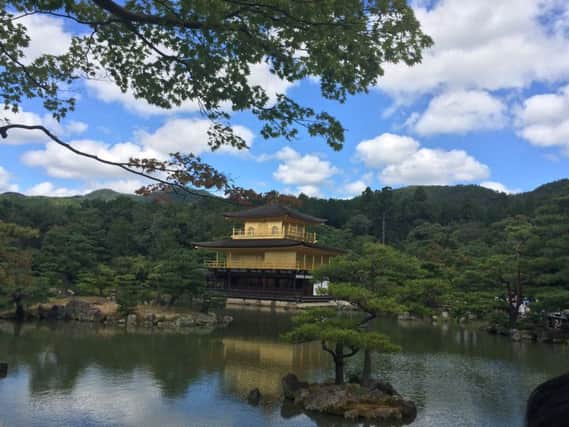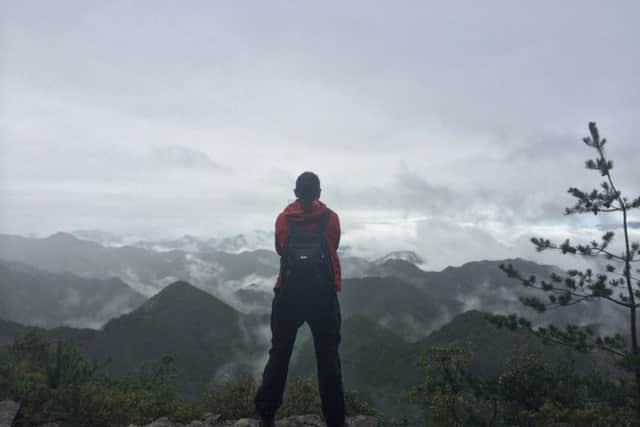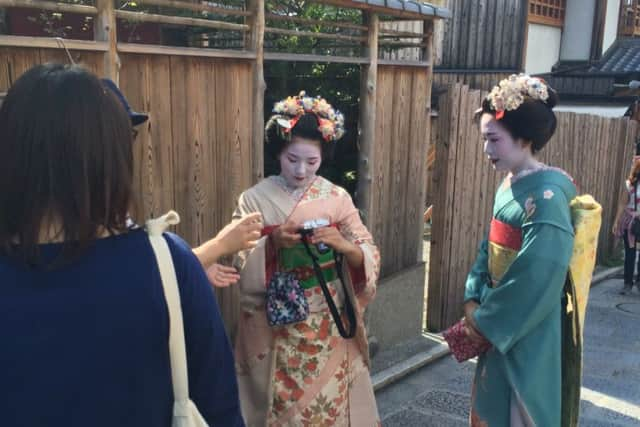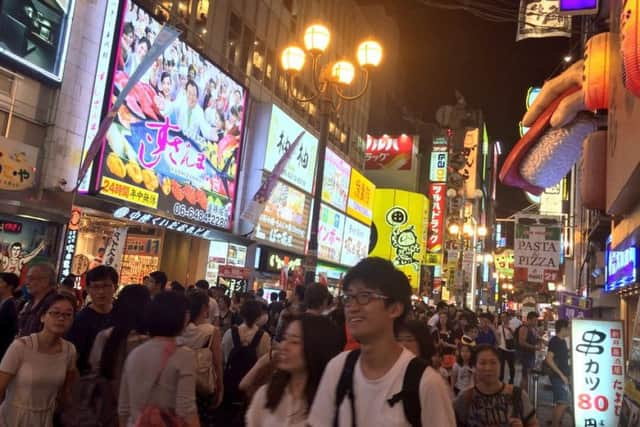Travel: Wash and go in Japan
This article contains affiliate links. We may earn a small commission on items purchased through this article, but that does not affect our editorial judgement.


I AM as bemused as Bill Murray in Lost In Translation. I haven’t even the excuse of being distracted by the charms of Scarlett Johansson nor a middle-age crisis, but Japan is proving hard to pin down. My hotel is the perfect microcosm. It has a ridiculously over-qualified toilet that not only offers to wash parts of me I’ve never seen, but to massage them too. My suite, though, is cloaked in a simple sheen of smooth pine panels, a hint at another altogether more natural, timeless Japan. I’m about to discover both on a journey to three of Japan’s largest cities and a hike through the Kumano mountains.
My first hotel in Tokyo is the new Aman (www.aman.com), arguably the plushest address in town, which is saying something in a city known for its luxury retreats. Impressively in a metropolis of around 13 million people it creates a sense of space and calm, with harmonious hardwoods and traditional architecture. I’m impressed too at the slick Mandarin Oriental (www.mandarinoriental.com/tokyo), where I enjoy a traditional style onsen (hot bath) in their spa with the nefarious neon lights of modern Tokyo blinking back at me. I’m starting to find these contrasts all very Japanese.
Advertisement
Hide AdAdvertisement
Hide AdI come across the two sides of Tokyo dining out too. I witness the famous tuna auction at Tsukiji Market, before sampling simple, boat-fresh sushi. At the Mandarin Oriental’s Sora Sushi at the other end of the scale I savour a three-hour sushi feast prepared by a master sushi chef with my own sake sommelier. Meanwhile the Peninsula’s Peter Grill conjures up the finest steak I’ve ever tasted outside Scotland (a 300g Gifu Hida-gyu fillet), while the Palace Hotel Tokyo’s GO! (http://en.palacehoteltokyo.com/restaurant/go/) shows me just how poor the ‘traditional’ teppanyaki restaurants in the UK are, with first rate wagyu and seafood treats cooked on a grill right in front of me.


Still bemused by a country that assaults all the senses I take the Shinkansen, or bullet train, whooshing at over 300km/h through rice paddies with the backdrop of Mount Fuji making me feel like I am looking at a postcard rather than gazing out a window. I arrive in Osaka to find it even more bustling than Tokyo. On my first walk I come across the 2.5 Base “cos play” café, where the worlds of dressing up, Japanese anime and café culture crash together.
Then it’s on to Kuromon Ichiba Market. Gone is anything avant garde. Instead a stall owner slices Kobe beef and grills it in front of my eyes as they have done for 20 years. I then join office workers dicing with death sampling the notoriously poisonous puffer fish.
If Osaka offers only flashes of the traditional, Kyoto is traditional Japan writ large. Zen Buddhist and Shinto temples hold their own amid the neon and skyscrapers, taking up swathes of the city centre and sprawling up its hillsides. I wander around Gion in the early evening, snatching glimpses of geishas scurrying to clandestine appointments.
Richard Farmer, a tour leader with Inside Japan (www.insidejapantours.com), guides me around a city that has become his favourite. “It is easy to see why Kyoto is the city that the Japanese themselves love to visit. It combines the old and the new seamlessly, with one eye always on taking nature into account too,” he enthuses as we recline in the calm of the Zen rock garden at one of the city’s Unesco World Heritage listed temples. The crowds hurry past, mainly Japanese tourists, many dressed in kimonos as they take their own journeys into Japanese tradition.


After a week immersed in urban Japan I break free of the cities and enter a world of thick forests, rugged mountains and remote temples that still informs and inspires the cities today in everything from their food to their hotel décor.
I find it surprisingly wild for this ultra-modern country. I’m walking not just in wild boar country, but also brown bear country too. I don’t see either on my five-day hike from Takijiri to Nachi-san, but I do chance upon monkeys and a brace of venomous pit vipers in virginal forests where I half expect to see a pterodactyl.
The trail I follow is the Kumano Kodo. It has been a rough and testing route of pilgrimage for centuries. I climb between isolated temples and the ruins of tea houses in the shadows of the country’s imperial masters who once passed this way. That these pilgrimages are still popular in a country I find generally secular says a lot about the sense of tradition and heritage that runs deep within the Japanese character.
Advertisement
Hide AdAdvertisement
Hide AdI stay en route at small inns (ryokan) in traditional villages that have little awareness of themselves as being such. These authentic inns all have in common a warm welcome and an onsen. Each night I soak in the warmth, meeting Japanese hikers and a sprinkling of foreigners. After the onsen it is on to the multi-course feasts that I get used to in Japan. I am used to the décor too. My wood-floored and panelled rooms costs a fraction of a night at the Aman, but they both tie into the same aesthetic traditions.


I arrive at the coast to find a tsunami warning in place. This follows the typhoon I caught the end of as I touched down and the earthquake that swayed my hotel room in Tokyo. In Japan you have no choice but to feel acutely aware of nature in all its power and beauty. Maybe this in part explains how the natural and traditional have become so interwoven with the modern here. This comes across constantly whether you are in a luxury Tokyo hotel or rambling over a remote mountain pass in a country that now beguiles me rather than just bemuses me as I fly out of Narita as another typhoon approaches.
• Etihad (www.etihad.com) flies from Edinburgh to Tokyo via Abu Dhabi. Economy returns from £563.49. Flat beds available in business class. Self-guided trips on the Kumano Kodo with Scottish specialist walking operator Macs Adventure (www.macsadventure.com) start at £715, including accommodation.